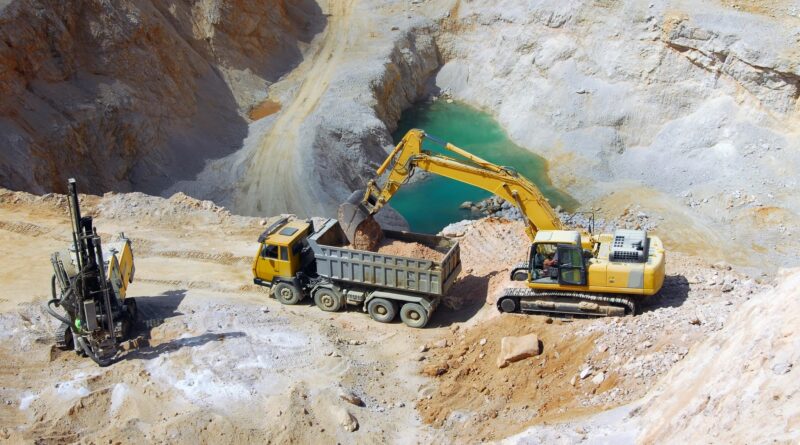Commodity Prices and the Canadian Dollar: What Investors Need to Know
The Canadian dollar (CAD), often referred to as the loonie, is closely tied to the performance of commodity prices. Canada, with its rich natural resource base, is a major exporter of commodities, and the fluctuations in commodity markets have a profound impact on the Canadian economy and its currency. This article explores the intricate relationship between commodity prices and the Canadian dollar, delving into the key commodities driving the CAD, the factors influencing their prices, and what investors need to know to navigate this dynamic landscape.
Understanding the Canadian Economy’s Reliance on Commodities
- Canada as a Resource-Rich Nation: Canada is endowed with abundant natural resources, including minerals, energy, and agricultural products. The country’s resource wealth has played a pivotal role in shaping its economic landscape. From oil sands in Alberta to vast forests in British Columbia, Canada’s diverse commodities contribute significantly to its economic output.
- Key Commodities Driving the Canadian Economy: Several commodities have a substantial impact on the Canadian economy:
- Oil and Gas: Canada is one of the world’s largest oil producers, particularly from the oil sands in Alberta. Oil exports contribute significantly to the country’s GDP.
- Minerals and Metals: Canada is a major producer of minerals such as gold, copper, and nickel. Mining activities play a crucial role in the economy, with mineral exports being a significant contributor to trade balances.
- Agricultural Products: Canada is known for its agricultural exports, including wheat, barley, canola, and forestry products. These exports contribute to the country’s economic growth and trade surplus.
The Interconnection: Commodity Prices and the Canadian Dollar
- Correlation Between Commodity Prices and the Canadian Dollar: The Canadian dollar has exhibited a strong historical correlation with commodity prices. As commodity prices rise or fall, the value of the loonie tends to follow suit. This correlation is particularly evident in the foreign exchange market, where the CAD is often considered a commodity currency.
- Terms of Trade: Canada’s terms of trade, which measure the ratio of export prices to import prices, are heavily influenced by commodity prices. When the prices of exported commodities rise relative to the prices of imported goods, Canada’s terms of trade improve, positively impacting the country’s economic performance and the Canadian dollar.

Factors Influencing Commodity Prices
- Global Demand and Supply Dynamics: The fundamental economic forces of supply and demand play a central role in determining commodity prices. Changes in global demand, driven by factors such as economic growth, industrial production, and population trends, can impact the prices of commodities. Additionally, disruptions in supply, whether due to geopolitical events or natural disasters, can cause price volatility.
- Geopolitical Risks: Geopolitical events and tensions in key commodity-producing regions can influence prices. For example, conflicts in oil-producing regions can disrupt the global oil supply, leading to price spikes. Investors need to stay informed about geopolitical developments as they can have a direct impact on commodity markets and, subsequently, the Canadian dollar.
- Currency Movements: The relationship between commodity prices and the Canadian dollar is bidirectional. While commodity prices influence the CAD, currency movements can also affect commodity prices. A weaker Canadian dollar can make commodities more attractive to foreign buyers, potentially boosting demand and prices. Conversely, a stronger CAD may have the opposite effect.
- Interest Rates and Monetary Policy: Changes in interest rates and monetary policy decisions, both in Canada and globally, can impact commodity prices. Central banks’ decisions, such as those made by the Bank of Canada, can influence the cost of borrowing, investment decisions, and economic growth—all of which have implications for commodity markets and the Canadian dollar.
Navigating the Canadian Dollar and Commodity Markets: Key Considerations for Investors
- Diversification Strategies: Given the strong correlation between the Canadian dollar and commodity prices, investors should consider diversification strategies. While exposure to commodities can provide potential returns, it’s essential to balance portfolios with assets that may exhibit different correlations to mitigate risks associated with commodity market volatility.
- Monitoring Economic Indicators: Investors should closely monitor economic indicators that impact both commodity prices and the Canadian dollar. Key indicators include:
- Global Economic Data: Economic indicators from major economies, such as GDP growth, industrial production, and consumer spending, can influence global demand for commodities.
- Interest Rate Decisions: Central bank decisions on interest rates, especially those made by the Bank of Canada, can affect currency values and, consequently, commodity prices.
- Geopolitical Risk Assessment: Geopolitical events can introduce volatility into commodity markets and impact the Canadian dollar. Investors should stay informed about geopolitical developments, trade tensions, and conflicts in regions that are significant commodity producers.
- Currency Hedging Strategies: For investors exposed to Canadian assets or commodities, implementing currency hedging strategies can be a prudent approach. Currency hedging helps manage the impact of currency fluctuations on investment returns, providing a level of stability in the face of potential Canadian dollar volatility.
- In-Depth Analysis of Specific Commodities: Different commodities have unique market dynamics and are influenced by specific factors. Conducting in-depth analyses of the specific commodities in which an investor is interested is crucial. For example, understanding the supply-demand dynamics of oil or the production cycles of metals can inform investment decisions.
Case Studies: Historical Examples of Commodity Price Movements and the Canadian Dollar
- Oil Price Fluctuations: The Canadian dollar’s sensitivity to oil prices has been evident in historical movements. During periods of rising oil prices, the CAD has often appreciated, reflecting the positive impact on Canada’s terms of trade. Conversely, when oil prices have experienced significant declines, the Canadian dollar has tended to weaken.
- Global Economic Downturns: The correlation between commodity prices, economic downturns, and the Canadian dollar was evident during the 2008 Global Financial Crisis. As demand for commodities plummeted amid a global economic downturn, commodity prices fell sharply, influencing the CAD’s depreciation.
- Recent Volatility Amid the COVID-19 Pandemic: The COVID-19 pandemic in 2020 induced significant volatility in commodity markets and the Canadian dollar. As lockdowns and economic disruptions led to a contraction in global demand, commodity prices experienced fluctuations, impacting the Canadian dollar’s value.

The relationship between commodity prices and the Canadian dollar is a dynamic and interconnected one, with profound implications for investors. As a resource-rich nation, Canada’s economic fortunes are closely tied to the performance of key commodities, influencing the value of its currency. Investors navigating this landscape must consider a range of factors, including global demand and supply dynamics, geopolitical risks, and currency movements.
Understanding the historical context of commodity price movements and their impact on the Canadian dollar provides valuable insights for investors. By staying informed, diversifying portfolios, and implementing prudent risk management strategies, investors can navigate the dynamic interplay between commodity markets and the Canadian dollar, positioning themselves to make informed and strategic investment decisions in this ever-evolving landscape.


